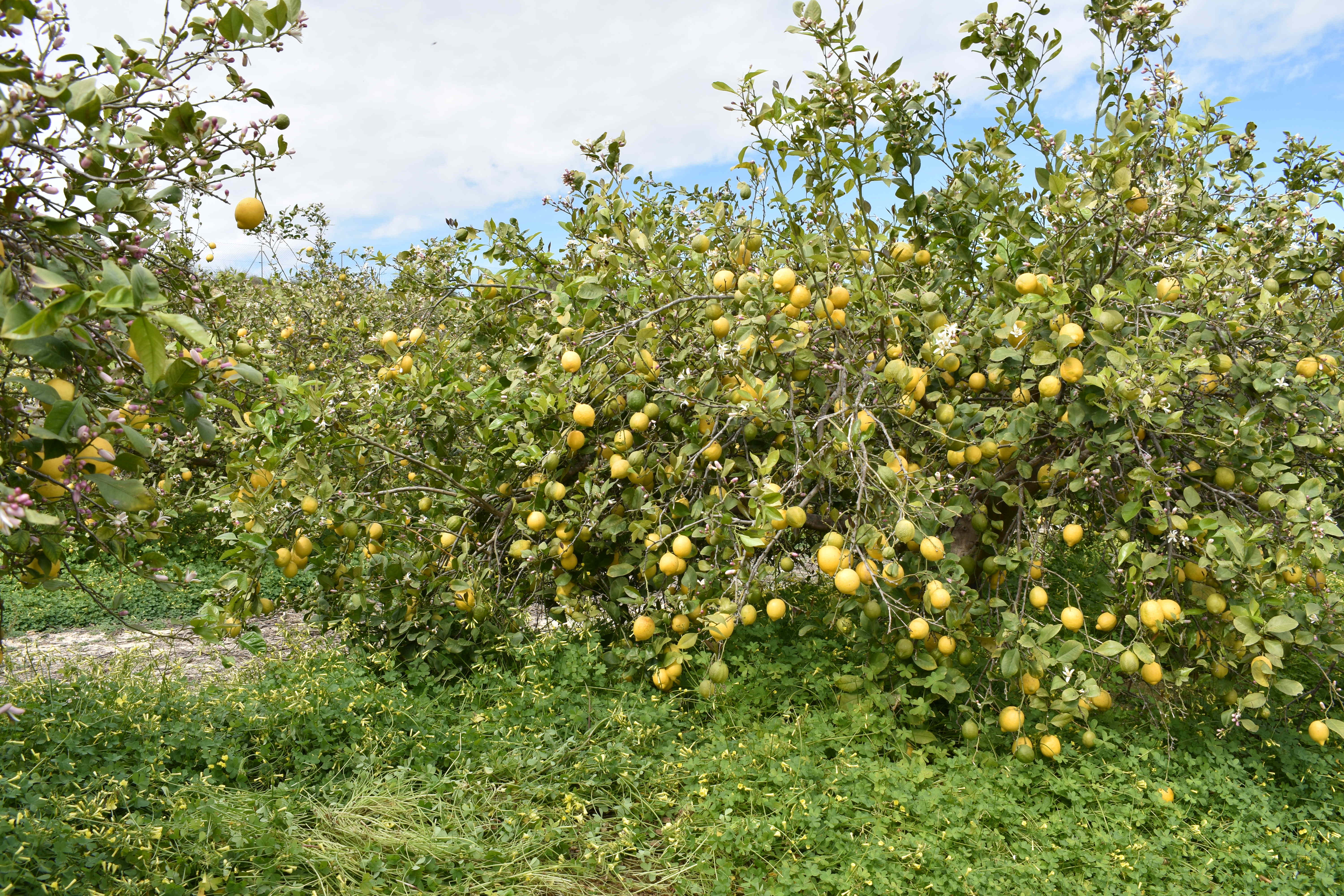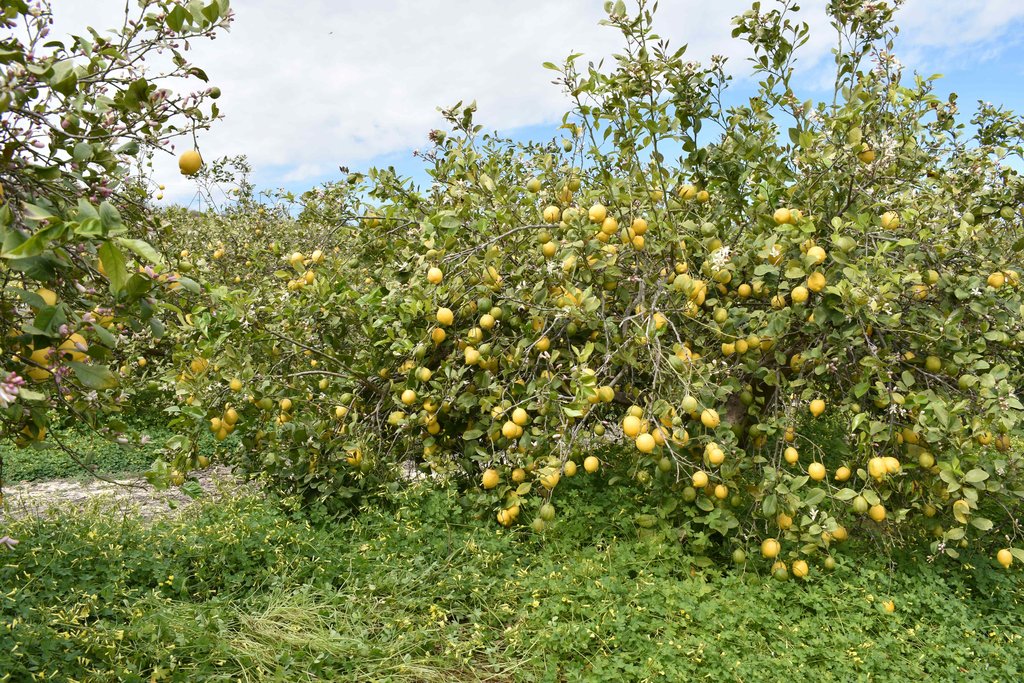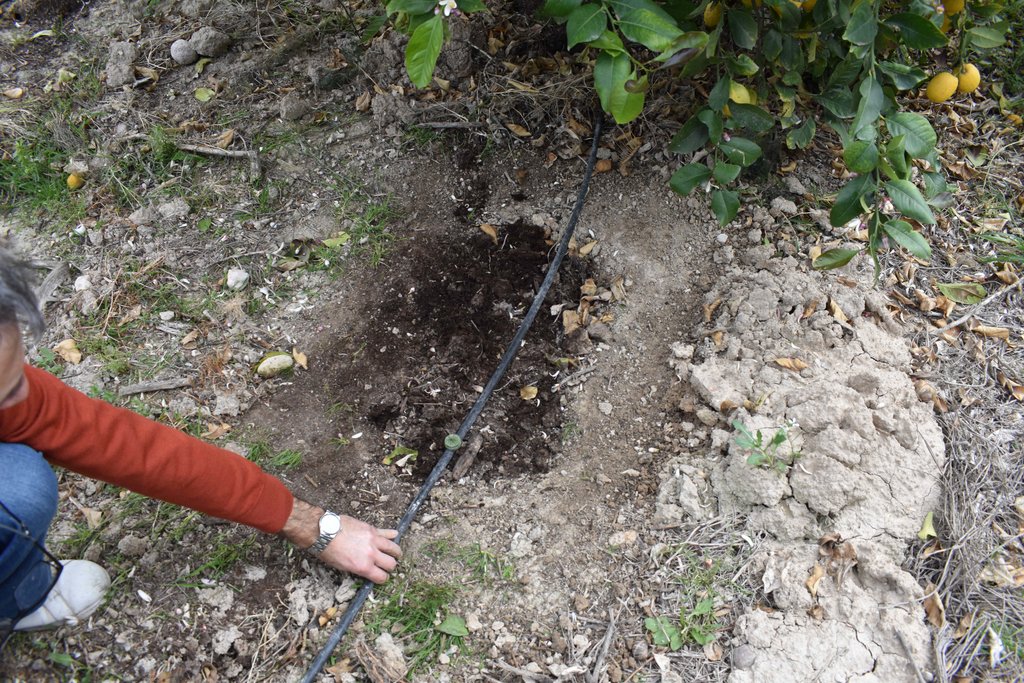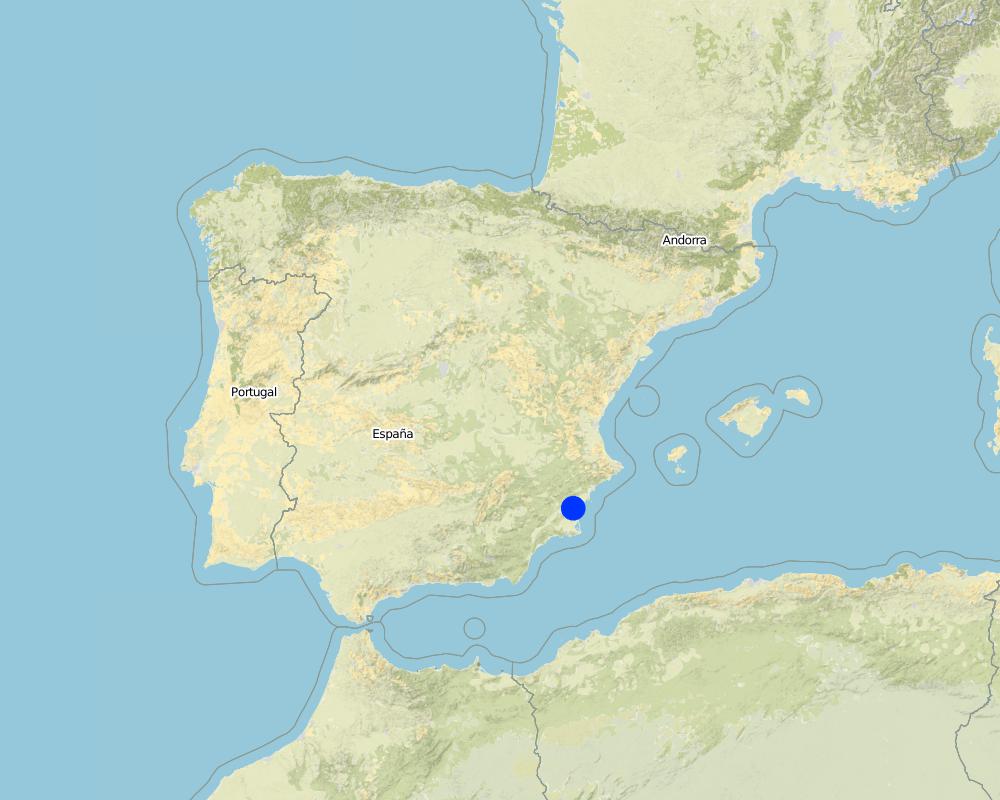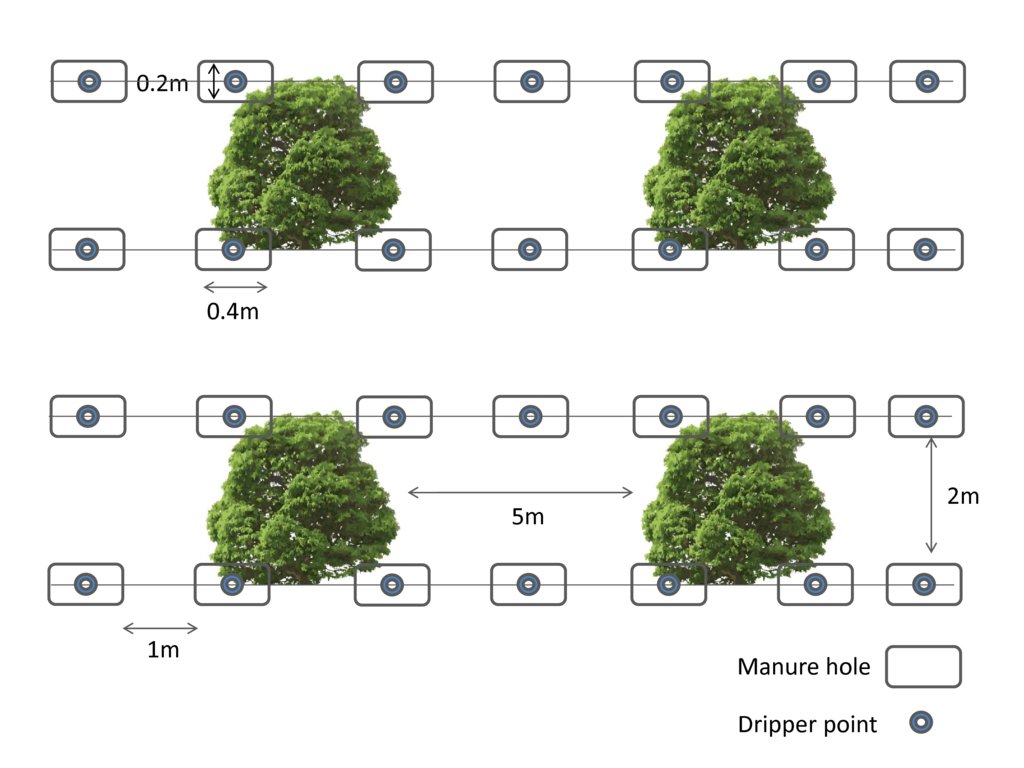Organic amendment located in dripper point in organic citrus production [إسبانيا]
- تاريخ الإنشاء:
- تحديث:
- جامع المعلومات: Alicia Morugán-Coronado
- المحرر: –
- المراجعون: Ursula Gaemperli, Gudrun Schwilch, Alexandra Gavilano
Aplicación de estiércol de oveja en puntos de riego por goteo en la producción de cítricos orgánicos
technologies_2010 - إسبانيا
عرض الأقسام
توسيع الكل طي الكل1. معلومات عامة
1.2 تفاصيل الاتصال بالأشخاص الرئيسيين لمصدر المعلومات والمؤسسات المشاركة في تقييم وتوثيق التقنية
اسم المشروع الذي سهّل توثيق/تقييم التقنية (إذا كان ذلك على صلة)
Interactive Soil Quality assessment in Europe and China for Agricultural productivity and Environmental Resilience (EU-iSQAPER)اسم المؤسسة (المؤسسات) التي سهلت توثيق/تقييم التقنية (إذا كان ذلك على صلة)
Agrochesmistry and Environment Department, University Miguel Hernandez (UMH) - إسبانيا1.3 الشروط المتعلقة باستخدام البيانات الموثقة من خلال WOCAT
يوافق جامع المعلومات والشخص (لاشخاص) الرئيسي لمصدر المعلومات على الشروط المتعلقة باستخدام البيانات الموثقة من خلال WOCAT:
نعم
1.4 إعلان بشأن استدامة التقنية الموصوفة
هل التقنية الموصوفة هنا تمثل مشكلة فيما يتعلق بتدهور الأراضي، بحيث لا يمكن إعلانها تقنية مستدامة لإدارة الأراضي؟:
كلا
2. وصف تقنيةالإدارة المستدامي للأراضي
2.1 وصف مختصر للتقنية
تعريف التقنية:
The land user applies organic amendment located in a dripper point. Sheep manure is applied every year in holes under the foot of every lemon tree. The holes are dug with a shovel.
2.2 وصف تفصيلي للتقنية
الوصف:
Natural / human environment: This SLM technology was established in land under sustainable agricultural in the region of the Vega Baja del Segura (Spain). The region under study is the most southerly county within the Valencian Community (Comunidad Valenciana). Our study site focuses on the province of Alicante. The county is Vega Baja del Segura, which has a total area of 957.73 km2. The county of Vega Baja de Segura covers the region from Orihuela to the mouth of the Segura, where it meets the Mediterranean Sea in Guardamar del Segura (Alicante). Agricultural production in this county is of a very high quality and is intensely competitive. Despite this, the region’s traditional agriculture industry is nonetheless being overtaken by other sectors, with the scarcity of water emerging as a key factor in this shift. Currently, 67% of the arable area relies on irrigation systems. In this area, small holdings yield the majority of the agricultural production: 76% of agricultural estates cover less than five hectares. The main cultivation, in terms of area, is in trees (22,900 ha). Citrus trees (lemon, orange, and mandarin) are the main trees grown in the area (INE, 2009).
Purpose of the Technology: Initially, the main objective of the land user applying the technology was to improve the soils and crop production in his fields by promoting sustainable agricultural management in the Vega Baja region. The previous use of land was conventional with inorganic fertilization and intensive ploughing. The land user had to convert the conventional lemon tree orchard to organic farming with more sustainable practices. The initial investment was very high and he needed nearly 7 years to get certified in Eco-certification and labelling by the Comité de Agricultura Ecológica de la Comunidad Valenciana.
The land user makes all kind of innovative practices to improve soil fertility and crop production; the most pioneering initiative was to apply organic amendment located in dripper points. Organic certified sheep manure is applied every year in September in holes under the foot of every lemon tree. The following year, the position of the hole is moved around the tree. The holes are dug with a shovel; each hole is 0.4 m wide and 0.2 m deep. The eco-certificate sheep manure is bought from sheep holders. The sheep manure is composed of NPK (2.9; 1.8; 2.4%) with a C/N ratio of 8.8. The organic matter content is 44.5% and the moisture value is 53.8%. The irrigation is by drippers and it includes fertilizers in it. The land user is controlling the fertirrigation dose, changing the amount depending on the nutritional state of the orchard and climatological conditions. As part of the organic agriculture, the weed is not removed anymore. Pest control is done by biological methods: fly adhesive traps, pheromones moths traps, Bacillus thuringiensis solution sprayed, paraffin oil and copper sulphate applied by drip irrigation. The pruning remains are kept on the soil surface as a mulching.
The major benefit is an enhancement of the soil organic content in the long term. There is also an improvement of the orchard productivity. The lemon trees become less prone to diseases and pests. The major disadvantage is the high costs at the beginning to change from conventional to organic and to get the Eco-certificate.
2.3 صور التقنية
2.4 فيديوهات عن التقنية
تعليقات، وصف موجز:
The organic amendment application is located in dripper points. Sheep manure was applied in holes near to the lemon trees. This technology was established in sustainable agricultural soil in the region of the Vega Baja del Segura.
التاريخ:
23/03/2017
الموقع:
Orihuela (Spain)
اسم مصور الفيديو:
Alicia MC
2.5 البلد/المنطقة/المواقع التي تم تنفيذ التقنية فيها والتي يغطيها هذا التقييم
البلد:
إسبانيا
المنطقة/الولاية/المحافظة:
Vega Baja/Alicante
مزيد من التفاصيل حول الموقع:
Orihuela
حدد انتشار التقنية:
- يتم تطبيقها في نقاط محددة/ تتركز على مساحة صغيرة
Map
×2.6 تاريخ التنفيذ
اذكر سنة التنفيذ:
2014
2.7 إدخال التقنية
حدد كيف تم إدخال التقنية:
- من خلال ابتكار مستخدمي الأراضي
3. تصنيف تقنية الإدارة المستدامي للأراضي
3.1 الغرض الرئيسي ( الأغراض الرئيسية) للتقنية
- تحسين الإنتاج
- الحد من تدهور الأراضي ومنعه وعكسه
- الحفاظ على النظام البيئي
- الحفاظ على/تحسين التنوع البيولوجي
- خلق أثر اقتصادي مفيد
- خلق أثر اجتماعي مفيد
3.2 نوع (أنواع) استخدام الأراضي الحالية حيث يتم تطبيق التقنية

الأراضي الزراعية
- زراعة الأشجار والشجيرات
زراعة الأشجار والشجيرات -حدد المحاصيل:
- الموالح (الحمضيات)
عدد مواسم الزراعة في السنة:
- 1
حدد:
The lemon is harvested between February and March
3.4 إمدادات المياه
إمدادات المياه للأرض التي يتم تنفيذ التقنية عليها:
- ري كامل
3.5 مجموعةالإدارة المستدامة للأراضي التي تنتمي إليها هذه التقنية
- الإدارة المتكاملة لخصوبة التربة
3.6 التدابير التقنية في مجال إلادارة المستدامة للأراضي

التدابير الزراعية
- A2: المادة العضوية/خصوبة التربة
3.7 الأنواع الرئيسية من تدهور الأراضي التي تناولتها التقنية
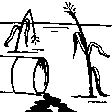
التدهور الكيميائي للتربة
- (Cn): تراجع الخصوبة وانخفاض محتوى المادة العضوية (غير ناتج عن الانجراف)
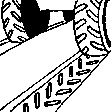
التدهور المادي أو الفيزيائي للتربة
- (Pc) : تراص التربة
- (Pk)ظهور وتكون قشرة سطحية

التدهور البيولوجي
- (Bq): انخفاض الكمية/الكتلة الحيوية
- (Bl): فقدان الحياة بالتربة
3.8 منع أو حد أو عكس تدهور الأراضي
تحديد هدف التقنية فيما يتعلق بتدهور الأراضي:
- منع تدهور الأراضي
- الحد من تدهور الأراضي
4. المواصفات الفنية، وأنشطة التنفيذ، والمدخلات، والتكاليف
4.1 الرسم الفني للتقنية
المواصفات الفنية (المتعلقة بالرسم الفني):
Species used: Lemon tree (Citrus verna)
Lemon tree root depth: 0.5-0.6m
Spacing between plants: 5m
Spacing between manure holes: 1m
Vertical intervals between drip irrigation rows: 2m
Width holes: 0.2m
Lengths holes: 0.4m
Depths holes: 0.2m
المؤلف:
Alicia Morugán Coronado
التاريخ:
24/03/2017
4.2 معلومات عامة بخصوص حساب المدخلات والتكاليف
حدد كيفية احتساب التكاليف والمدخلات:
- حسب مساحة تنفيذ التقنية
الإشارة إلى حجم ووحدة المساحة:
7.7 ha
عملة أخرى/ عملة وطنية (حدد):
Euro
إذا كان ذا صلة، وضح سعر الصرف من الدولار الأمريكي إلى العملة المحلية (على سبيل المثال، 1 دولار أمريكي = 79.9 ريال برازيلي): 1 دولار أمريكي =:
0,944508
اذكر متوسط تكلفة أجر العمالة المستأجرة في اليوم الواحد:
60
4.5 الصيانة/الأنشطة المتكررة
| النشاط | التوقيت/الوتيرة | |
|---|---|---|
| 1. | Digging hole | September |
| 2. | Organic amendment | September |
| 3. | Irrigation | all year |
| 4. | Biological control | all year |
| 5. | Fertirrigation | All year, except autumn and winter |
| 6. | Pruning material left on soil surface | May, July and August |
4.6 التكاليف والمدخلات اللازمة للصيانة/للأنشطة المتكررة (سنويًا)
| تحديد المدخلات | الوحدة | الكمية | التكاليف لكل وحدة | إجمالي التكاليف لكل مدخل | % من التكاليف التي يتحملها مستخدمو الأراضي | |
|---|---|---|---|---|---|---|
| العمالة | Organic amendment | person/hour | 5,0 | 6,0 | 30,0 | 100,0 |
| العمالة | Pruning | person/hour | 100,0 | 6,0 | 600,0 | 100,0 |
| العمالة | Fertirrigation | person/hour | 100,0 | 6,0 | 600,0 | 100,0 |
| العمالة | Biological control | person/hour | 30,0 | 10,0 | 300,0 | 100,0 |
| معدات | Tractor with trailer (hire per day) | piece | 2,0 | 30,0 | 60,0 | 100,0 |
| الأسمدة والمبيدات الحيوية | Organic amendment | kg | 1200,0 | 30,0 | 36000,0 | 100,0 |
| الأسمدة والمبيدات الحيوية | Fertirrigation | Litres | 1400,0 | 8,0 | 11200,0 | 100,0 |
| الأسمدة والمبيدات الحيوية | Bacillus thuringiensis | Kg | 60,0 | 20,0 | 1200,0 | 100,0 |
| الأسمدة والمبيدات الحيوية | Copper sulphate solution | Kg | 5,0 | 30,0 | 150,0 | 100,0 |
| الأسمدة والمبيدات الحيوية | Paraffin oil | Litres | 10,0 | 30,0 | 300,0 | 100,0 |
| الأسمدة والمبيدات الحيوية | Adhesive trap | piece | 100,0 | 10,0 | 1000,0 | 100,0 |
| الأسمدة والمبيدات الحيوية | Pheromone trap | piece | 10,0 | 40,0 | 400,0 | 100,0 |
| إجمالي تكاليف صيانة التقنية | 51840,0 | |||||
| إجمالي تكاليف صيانة التقنية بالدولار الأمريكي | 54885,72 | |||||
التعليقات:
The price of sheep manure is so high because he has to buy it from eco-certified sheep holders.
4.7 أهم العوامل المؤثرة على التكاليف
قدم وصفا لأهم العوامل التي تؤثر على التكاليف:
The pests, and the loss of product caused by unexpected weather.
5. البيئة الطبيعية والبشرية
5.1 المناخ
هطول الأمطار السنوي
- < 250 مم
- 251- 500 ملم
- 501 - 750ملم
- 1,000-751 ملم
- 1,500-1,100 ملم
- 2,000-1,500 ملم
- 3,000-2,001 ملم
- 4,000-3,100 ملم
- > 4000 ملم
حدد متوسط هطول الأمطار السنوي (إذا كان معروفًا)، بالملليمتر:
250,00
المنطقة المناخية الزراعية
- شبه قاحلة
5.2 طوبوغرافيا
متوسط الانحدارات:
- مسطح (0-2%)
- بسيط (3-5%)
- معتدل (6-10%)
- متدحرج (11-15%)
- تلال (16-30%)
- شديدة الانحدار(31-60%)
- فائقة الانحدار (>60%)
التضاريس:
- هضاب/سهول
- أثلام مرتفعة
- المنحدرات الجبلية
- منحدرات التلال
- منحدرات في السفوح
- قاع الوادي
المنطقة الارتفاعية:
- 100-0 متر فوق سطح البحر
- 500-101 متر فوق سطح البحر
- 1,000-501 متر فوق سطح البحر
- 1,500-1,001 متر فوق سطح البحر
- 2,000-1,501 متر فوق سطح البحر
- 2,500-2,100 متر فوق سطح البحر
- 3,000-2,501 متر فوق سطح البحر
- 4,000-3,001 متر فوق سطح البحر
- > 4000 متر فوق سطح البحر
وضح ما إذا كانت التقنية مطبقة على وجه التحديد في:
- غير ذات صلة
5.3 التربة
متوسط عمق التربة:
- ضحل جدًا (0-20 سم)
- ضحلة (21-50 سم)
- متوسطة العمق (51-80 سم)
- عميقة (81-120 سم)
- عميقة جدًا (> 120 سم)
قوام التربة (التربة السطحية):
- متوسط ( طميي، سلتي)
قوام التربة (> 20 سم تحت السطح):
- متوسط ( طميي، سلتي)
المواد العضوية في التربة السطحية:
- متوسطة (1-3%)
5.4 توافر المياه ونوعيتها
منسوب المياه الجوفية:
سطحية
توافر المياه السطحية:
متوسط
نوعية المياه (غير المعالجة):
للاستخدام الزراعي فقط (الري)
هل تعتبر ملوحة الماء مشكلة؟:
كلا
هل تحدث فيضانات في المنطقة؟:
كلا
5.5 التنوع البيولوجي
تنوع الأنواع:
- مرتفع
تنوع الموائل:
- متوسط
5.6 خصائص مستخدمي الأراضي الذين يطبقون التقنية
مستقر أو مرتحل:
- غير المترحل
التوجه السوقي لنظام الإنتاج:
- تجاري/سوق
الدخل من خارج المزرعة:
- >50% من إجمالي الدخل
المستوى النسبي للثروة:
- ضعيف
أفراداً أو مجموعات:
- فرد/أسرة معيشية
مستوى المكننة:
- عمل يدوي
- ميكانيكية/ مزودة بمحرك
الجنس:
- رجال
عمر مستخدمي الأرضي:
- متوسط العمر
5.7 متوسط مساحة الأرض التي يستخدمها مستخدمو الأراضي الذين يطبقون التقنية
- < 0.5 هكتارا
- 0.5 - 1 هكتار
- 1 -2 هكتار
- 2 - 5 هكتار
- 5 - 15 هكتار
- 15 - 50 هكتار
- 50 - 100هكتار
- 500-100 هكتار
- 1,000-500 هكتار
- 10,000-1,000 هكتار
- > 10,000 هكتار
هل يعتبر هذا نطاقًا صغيرًا أو متوسطًا أو واسعا (في إشارة إلى السياق المحلي)؟:
- على نطاق متوسط
5.8 ملكية الأراضي، وحقوق استخدام الأراضي، وحقوق استخدام المياه
ملكية الارض:
- فردية، لا يوجد سند ملكية
حقوق استخدام الأراضي:
- مؤجر
حقوق استخدام المياه:
- مجتمعي (منظم)
5.9 الوصول إلى الخدمات والبنية التحتية
الصحة:
- ضعيف
- معتدل
- جيد
التعليم:
- ضعيف
- معتدل
- جيد
المساعدة التقنية:
- ضعيف
- معتدل
- جيد
العمل (على سبيل المثال خارج المزرعة):
- ضعيف
- معتدل
- جيد
الأسواق:
- ضعيف
- معتدل
- جيد
الطاقة:
- ضعيف
- معتدل
- جيد
الطرق والنقل:
- ضعيف
- معتدل
- جيد
مياه الشرب وخدمات الصرف الصحي:
- ضعيف
- معتدل
- جيد
الخدمات المالية:
- ضعيف
- معتدل
- جيد
6. الآثار والتصريحات الختامية
6.1 الآثار التي أظهرتها التقنية في الموقع
الآثار الاجتماعية والاقتصادية
الإنتاج
إنتاج المحاصيل
التعليقات/ حدد:
The land user observe that the crop production increased two times with the organic agriculture management.
جودة المحاصيل
التعليقات/ حدد:
The lemon fruit with the organic farming management is bigger than before with conventional management.
توافر المياه ونوعيتها
توافر مياه الري
التعليقات/ حدد:
Changing the irrigation to drip irrigation the land user can save water.
الدخل والتكاليف
النفقات على المدخلات الزراعية
التعليقات/ حدد:
Less use of fertilizer, less tillage, no herbicides/pesticides.
دخل المزرعة
التعليقات/ حدد:
The price of eco-certified lemon in the market is 3 times higher than conventional and the expenses on agricultural inputs are lower.
عبء العمل
التعليقات/ حدد:
Only work for digging the hole, maintaining fertirrigation, harvesting and pruning, but no work for applying pesticides, tillage and weeding.
الآثار الاجتماعية والثقافية
الوضع الصحي
التعليقات/ حدد:
Improved health due to non-application of herbicides/pesticides.
استخدام الأراضي / حقوق المياه
التعليقات/ حدد:
The farmer can buy more land due to this income.
المؤسسات المجتمعية
التعليقات/ حدد:
Due to this eco-management, the farmer became well-known and recognized in the region. He appears in television and teaches other farmers and became the president of the regional farmer association.
المعرفة بالإدارة المستدامة للأراضي/تدهور الأراضي
التعليقات/ حدد:
The farmer learned a lot about the soil and enhanced his continued education.
الآثار الايكولوجية
دورة المياه / الجريان السطحي
كمية المياه
التعليقات/ حدد:
Less water is used through drip irrigation.
الجريان السطحي
التعليقات/ حدد:
Better infiltration due to better soil structure due to the manure application, thus less runoff.
التربة
تراص التربة
التعليقات/ حدد:
Less soil compaction due to better soil structure due to the manure application.
دورة المغذيات/إعادة الشحن
التعليقات/ حدد:
Adding sheep manure increases nutrients.
المادة العضوية في التربة/تحت الطبقة c
التعليقات/ حدد:
Adding sheep manure increases organic matter.
التنوع البيولوجي: الغطاء النباتي، الحيوانات
الأنواع المفيدة
التعليقات/ حدد:
The organic farming enforces the lemon trees against pests and diseases.
مكافحة الآفات/الأمراض
التعليقات/ حدد:
The organic farming enforces the lemon trees against pests and diseases.
الحد من مخاطر المناخ والكوارث
آثار الفيضانات
التعليقات/ حدد:
Flood impacts is less due to better soil structure.
انزلاقات أرضية / تدفقات الحطام
التعليقات/ حدد:
Land movements decrease due to better soil structure.
آثار الجفاف
التعليقات/ حدد:
Drought impacts decrease due to more soil moisture.
انبعاث الكربون والغازات المسببة للاحتباس الحراري
التعليقات/ حدد:
Increase the carbon in the soil due to organic farming and the manure application.
6.2 الآثار التي أظهرتها التقنية خارج الموقع
الأضرار التي لحقت بحقول الجيران
التعليقات/ حدد:
No pollution by herbicides/pesticides.
آثار الغازات الدفيئة
التعليقات/ حدد:
Increase the carbon in the soil due to organic farming and the manure application.
6.3 تعرض التقنية وحساسيتها لتغير المناخ التدريجي والظواهر المتطرفة/الكوارث المرتبطة بالمناخ (كما يراها مستخدمو الأراضي)
تغير مناخ تدريجي
تغير مناخ تدريجي
| الموسم | زيادة أو نقصان | كيف تتعامل التقنية مع ذلك؟ | |
|---|---|---|---|
| درجة الحرارة السنوية | زيادة | جيدا | |
| درجة الحرارة الموسمية | الصيف | زيادة | جيدا |
| هطول الأمطار السنوي | انخفاض | جيدا | |
| هطول الأمطار الموسمية | موسم الرطوبة/ الأمطار | زيادة | جيدة جدا |
الظواهر المتطرفة / الكوارث المرتبطة بالمناخ
الكوارث المناخية
| كيف تتعامل التقنية مع ذلك؟ | |
|---|---|
| جفاف | جيدا |
الكوارث الهيدرولوجية
| كيف تتعامل التقنية مع ذلك؟ | |
|---|---|
| فيضان مفاجئ | جيدا |
| الانزلاق الأرضي | جيدة جدا |
الكوارث البيولوجية
| كيف تتعامل التقنية مع ذلك؟ | |
|---|---|
| الإصابة بالحشرات/الديدان | جيدا |
6.4 تحليل التكلفة والعائد
كيف يمكن مقارنة العوائد نسبة لتكاليف الإنشاء (من وجهة نظر مستخدمي الأراضي)؟
عوائد قصيرة الأجل:
سلبي قليلا
عوائد طويلة الأجل:
ايجابي جدا
كيف تتم مقارنة العوائدمع كلفة الصيانة/التكاليف المتكررة (من وجهة نظر مستخدمي الأراضي)؟
عوائد قصيرة الأجل:
إيجابي قليلا
عوائد طويلة الأجل:
ايجابي جدا
التعليقات:
The land user had problems to cope with the money input to establish the SLM technology at the beginning of the process, but he believes that in 10 years the perspective will be better and he will recover the money spent at the beginning.
6.5 اعتماد التقنية
- 1-10%
من بين جميع الذين تبنوا التقنية، كم عدد الذين فعلوا ذلك بشكل تلقائي، أي دون تلقي أي حوافز مادية/مدفوعات؟:
- 91-100%
6.6 التكيف
هل تم تعديل التقنية مؤخرًا لتتكيف مع الظروف المتغيرة؟:
نعم
إذا كانت الإجابة بنعم، وضح الظروف المتغيرة التي تم تكييفها معها:
- تغير المناخ / التطرف
حدد تكيف التقنية(التصميم، المواد/الأنواع، الخ.):
The dose of manure application was modified regarding the climatological conditions.
6.7 نقاط القوة / المزايا / الفرص التي توفرها التقنية
| نقاط القوة/ المزايا/ الفرص من وجهة نظر مستخدمي الأراضي |
|---|
| Reduction of soil degradation |
| Enhacement of soil fertility |
| نقاط القوة/ المزايا/ الفرص من وجهة نظر جامع المعلومات أو غيره من الاشخاص الرئيسيين لمصدر المعلومات |
|---|
| Improvement in crop production |
| Contribution towards a better social acknowledgment of the sustainable farming |
6.8 نقاط ضعف / مساوىء / مخاطر التقنية وسبل التغلب عليها
| نقاط الضعف/ المساوىء/ المخاطر من وجهة نظر مستخدم الأراضي | كيف يمكن التغلب عليها؟ |
|---|---|
| The high dependency on climatological conditions | Pay special attention in soil structure |
| Strict control of organic amendment input with exhaustive verifications and monitoring of the sheep manure | Improve verification process. |
| نقاط الضعف/ المساوىء/ المخاطر من وجهة نظر جامع المعلومات أو غيره من الاشخاص الرئيسيين لمصدر المعلومات | كيف يمكن التغلب عليها؟ |
|---|---|
| Short response time to the weather risk or plagues | Daily monitoring of crop and soil response. |
7. المراجع والروابط
7.1 طرق جمع/مصادر المعلومات
- زيارات ميدانية، مسوحات ميدانية
1: land user
- مقابلات مع مستخدمي الأراضي
2
- مقابلات مع المتخصصين/الخبراء في الإدارة المستدامة للأراضي
1: Biological control advisor
متى تم تجميع البيانات (ميدانيا)؟:
23/03/2017
7.2 المراجع للمنشورات المتاحة
العنوان، المؤلف، السنة، النظام القياسي الدولي لترقيم الكتب ISBN:
no
7.3 روابط للمعلومات ذات الصلة على الإنترنت
العنوان/الوصف:
Citrisol S.Coop (farmers association)
عنوان الرابط URL:
http://citrisol.es/
الروابط والوحدات المواضيعية
توسيع الكل طي الكلالروابط
لا يوجد روابط
الوحدات المواضيعية
لا يوجد وحدات مواضيعية


